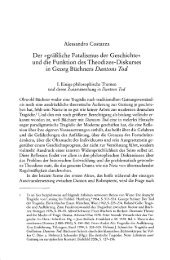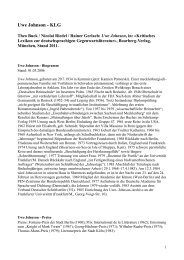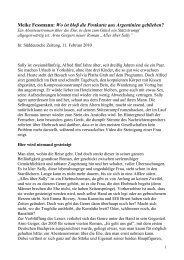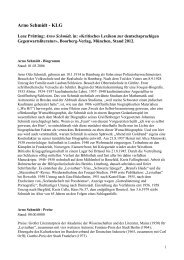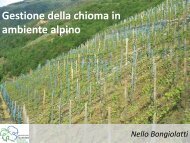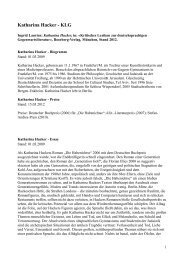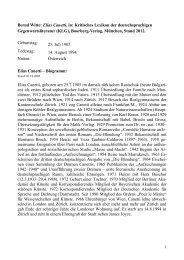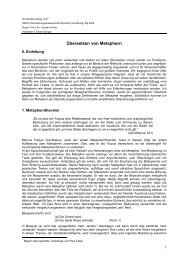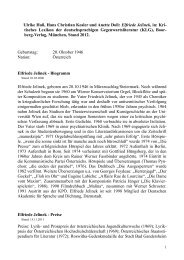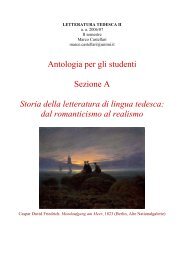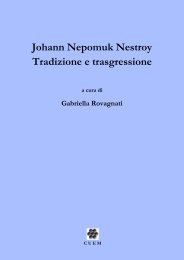Volume of Abstracts - Università degli Studi di Milano
Volume of Abstracts - Università degli Studi di Milano
Volume of Abstracts - Università degli Studi di Milano
You also want an ePaper? Increase the reach of your titles
YUMPU automatically turns print PDFs into web optimized ePapers that Google loves.
5 th Int. Workshop on Ice Caves (IWIC – V)<br />
Barzio (LC), Valsassina, Grigna and <strong>Milano</strong>, September 16 – 23, 2012<br />
<strong>Volume</strong> <strong>of</strong> <strong>Abstracts</strong><br />
the inclined plane flowing surface and formation <strong>of</strong> thin lathlike crystal<br />
suspension („moon milk‟) on vertical and negative wall sections and calcite<br />
„fur hair‟ on clay soil<br />
δ 13 C IN CAVE ICE: A NEW PROXY FOR PALAEOPRECIPITATION<br />
RECONSTRUCTIONS<br />
Perşoiu A. 1 & Bojar A.-V. 2<br />
1 Department <strong>of</strong> Geography, University <strong>of</strong> Suceava, Universitatii 13, Suceava 720229, Romania<br />
(aurel.persoiu@gmail.com)<br />
2 Salzburg University, Geographie und Geologie, Hellbrunnerstrasse 34, Salzburg , Austria<br />
Over the last few years scientific interest in ice caves has been rejuvenated<br />
by the possible use <strong>of</strong> the perennial ice deposits they host in palaeoclimatic<br />
and palaeoenvironmental stu<strong>di</strong>es. Oxygen and hydrogen stable isotopes,<br />
pollen and trace elements in ice, in combination with ra<strong>di</strong>ometric and<br />
in<strong>di</strong>rect dating methods, have been used to infer past changes in air<br />
temperature, moisture sources, vegetation changes and pollution. Although<br />
stu<strong>di</strong>ed in some detailed, the cryogenic cave calcite (CCC) has not been<br />
used thus far as a proxy for climatic and environmental elements. In this<br />
study we have investigated the palaeoclimatic potential preserved by the<br />
stable isotope composition <strong>of</strong> CCC from Scărişoara Ice Cave (SIC), Bihor<br />
Mountains, Romania. A number <strong>of</strong> 42 calcite samples from impurity-rich<br />
layers exposed on the lateral side <strong>of</strong> the ice block in SIC have been<br />
analyzed for their O and C isotope values. Twenty-five samples were<br />
recovered from a section <strong>of</strong> the ice block that formed during the Me<strong>di</strong>eval<br />
Warm Period (MWP, prior to 1300 AD), and seventeen samples came from<br />
ice that accumulated during the Little Ice Age (LIA, between ca. 1300 and<br />
1700 AD). All calcite samples are composed <strong>of</strong> CCC with δ 18 O values<br />
ranging between -2 and -8 ‰VPDB, and δ 13 C values ranging between 0 and<br />
+10 ‰VSMOW. These high δ 13 C values are specific for calcite formed during<br />
freezing <strong>of</strong> water accompanied by rapid degassing <strong>of</strong> CO2 and strong kinetic<br />
fractionation. While the δ 18 O values are evenly <strong>di</strong>stributed through the<br />
entire sequence, the δ 13 C values form two <strong>di</strong>stinct groups, with more<br />
positive values (with an average <strong>of</strong> +6 ‰) for samples from the MWP<br />
section <strong>of</strong> the ice block, and less positive values (with an average <strong>of</strong> +2<br />
‰) for samples formed during the LIA. We tentatively suggest that,<br />
despite strong kinetic fractionation during CCC formation, the heavier δ 13 C<br />
values in CCC samples from the MWP are reflecting warmer and/or dryer<br />
climates, while during the colder LIA, lower δ 13 C values in soil CO2 led to<br />
more depleted δ 13 C values in CCC. Pollen analyses in ice has shown that<br />
36




